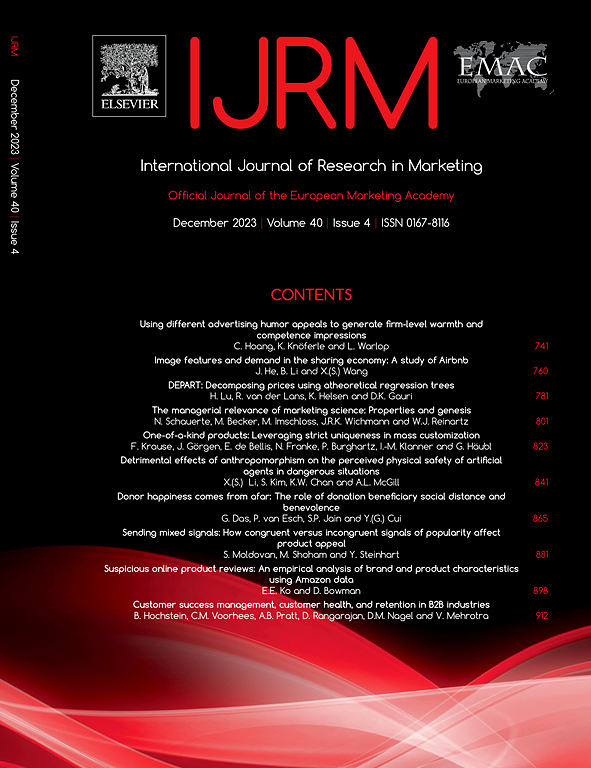Communicating with B2B buyers after “Dropping the Ball”: Using digital and non-digital communication formats to recover from salesperson transgressions
Abstract
Salespeople are inundated with new sales enablement tools and digital communication options daily, creating new ways to communicate with customers and navigate the inevitable case of “dropping the ball.” This research investigates how different communication formats cushion the blow and minimize damage from salesperson transgressions. Study 1 utilizes firm-provided communication and performance data paired with survey data from business-to-business (B2B) customers to find that the use of synchronous communication (face-to-face (F2F) in contrast to email) mitigates the negative impact of relational transgression but has no such effect on the impact of sales process transgression. Study 2 utilizes an experiment with B2B professionals to identify that synchronous communication (videoconferencing and F2F in contrast to email) improves relationship satisfaction and customer positive word of mouth (PWOM) more for relational than sales process transgressions. Study 3 extends these findings with an experiment exploring additional communication formats (phone and text) while exploring perceived salesperson competence and warmth as mediating mechanisms in the model. Taken together, F2F or synchronous communications should not be viewed as the unilaterally preferred communication format during transgressions, and salespeople should balance communication needs with resource constraints.

 求助内容:
求助内容: 应助结果提醒方式:
应助结果提醒方式:


